The Composting Costumier talks Bringing Objects to Life with Bryony Anderson from One Off Makery
This interview took place between Wathaurang land and Palawa Land. I acknowledge the Australian Aboriginal and Torres Strait Islander peoples as the first inhabitants and traditional custodians of the nation and pay my respects to their Elders past and present.
In your own words can you describe what you do and how you got started with sustainable practices?
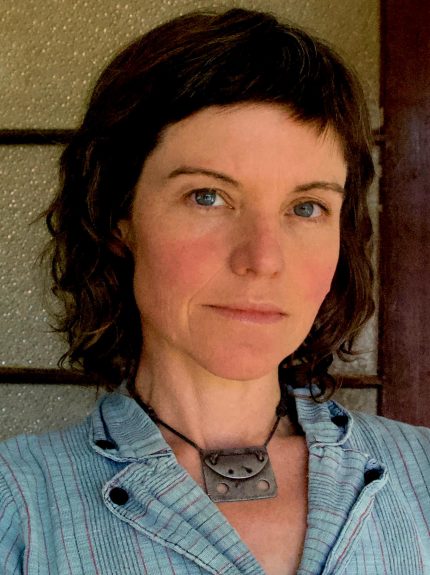
I mostly make objects for performance and usually that means they have some way of being animated so I make a lot of puppets, for Born In A Taxi specifically I’ve made a pedal powered boat and a giant inflatable whale. I’m currently working for Terrapin Theatre Company in Hobart as an associate artist and in the last few months I’ve been making animated furniture, so it’s pretty varied, but I guess the common thread is that there’s always some sort of mechanisation or way of bringing objects to life.
As far as sustainability goes, I started making for performance in about 1997 and I just became very aware of the level of waste involved in the theatre industry and obliquely working near but never in the film industry, the mind boggling amounts of waste that go into a skip at the end of a shoot. But the same is true in theatre, a show finishes and then when the tour’s done it often ends up in a skip out the back of the theatre.
Having had the concern about the sustainability of resources since I could think for myself, it was really important to find a way of making work that is of a calibre that can be presented onstage but be mindful of the resources that it uses and the waste that it creates.
So since then I’ve been developing a vocabulary of techniques for working with materials that come from either diverted landfill, or op-shops, or home grown or industrial offcuts, that kind of stuff.
So Does that mean you’re based in Tasmania at the moment or do you do that from a distance with them?
We’ve been here for about a year, we’re just about to leave tomorrow to go back to New South Wales. Then I’ll have a three year contract with them starting next january so we’ll be back again for that time.
So where you’re going back to now in New South Wales, I think I read somewhere that you work in an off-the-grid workshop, is that where to live and are going back to now?
We have a property of 350 acres of bush inland from Port Macquarie and there’s a big shed on that which is our living space, actually our living space is kind of arranged around the workshop space. And yes it’s totally off-grid, it runs on rainwater and solar-power.
One of the first things I did when we arrived in 2004 was plant some construction bamboo and in the last couple of years I’ve been able to start harvesting and seasoning that and using it in puppets that I’ve been making.
And we’ve also found an amazing property down the road that planted a tree called Paulownia in the 80s being told it was going to be this new “miracle-market” The miracle-market never happened and the trees got weedy and became a pest, so there’s people stuck with these trees all over the valley but they’re actually an incredible puppet making material. So I’ve recently started commissioning timber from them. They have a mill set up where they mill the dead-fall boughs and fallen trees and I buy the fallen timber from them. So I’ve been developing methods of working with that recently.
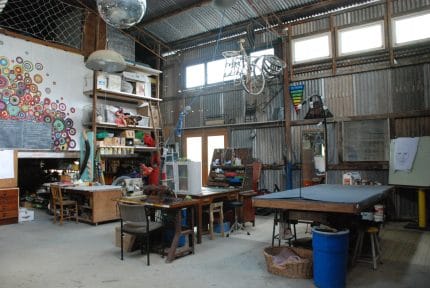
Because I came to you through Born In A Taxi (I’m going to do an interview with them soon too) when did you start with them and how?
I made a pedal powered boat for them 15 years ago and that was made on our property as well, possibly one of the first things we did there. That was made of salvaged steel, welded frame bike parts and then a cardboard paper-mache boat structure, and salvaged fabrics for the various direction finding duck and the fish that leap around the boat. And then the whale came after that.
Can you talk me through that process?
I had a sort of sad reality check about being able to hold air with salvaged materials. I really tried to source materials that were salvaged to make the entire thing, but found that the sheer volumes and necessity for 100% air retention wasn’t possible. So I ended up making an internal skin of new fabric
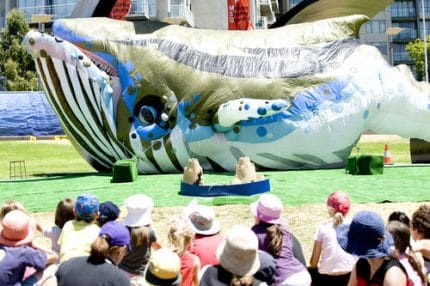
and then making the skin of the whale over that with salvaged parachutes from a town down the road. They run sky-diving and they have to retire their parachutes after a certain number of jumps, they’re often totally fine, they just have wide safety margins. So I went and got a bunch of those retired ones and cut them up and made the skin out of that and then everything else that I could manage was salvaged but it was probably one of the less salvaged material projects I’ve done.
I try and aim for about 90% salvaged where I can, allowing for the fact that glue and hardware and thread and things are not really things that you can salvage.
I noticed that you approach a lot of places to get salvaged materials, what do you find is the response from them to that? Is it difficult approaching people? Do they kind of look at you like “Why do you want my old parachutes?”
Yeah I guess I’ve kind of developed my own way of doing it. When I was young and shy it was terribly embarrassing and difficult, but I’ve found ways. These days I bring my sketchbook and I explain the process I’m going through and why I want to do it that way and usually by the time I’ve let people into the thinking behind it, they’re all for it.
So you’ve already kind of gone through most of the process in the hope that they would give you the thing first ?
Yeah you kind of have to be nimble with your ideas and willing to adjust your design based on the materials that you can source.
Sometimes it’s gone the other way, when I’ve been generating my own projects and it hasn’t been to a particular brief, some times I can look at a material and see the potential in that and come up with designs based on whatever is going to waste, like 3km of balleane twine or packs of packing strap or whatever.
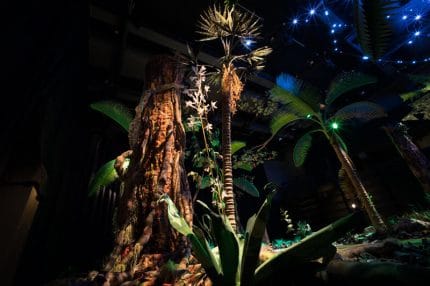
What’s your current project, whether that’s with theatre or your own stuff?
I’m going home for a little breather because I’ve been homeschooling and working through the whole Covid lockdown. Back home our property was all burned in November so there’s a lot of work to do, of the forest there was about 349 acres burned out of 350 something, so just going home to take stock of that. I’m actually working on a project for Terrapin while I’m there, based on waste, 90% waste wearable body puppets. Then coming back to Terrapin: next year we’re going to be running a series of school’s workshops that allow kids to be able to make a whole show from scratch in a day. Introduce them to the ability to make anything out of anything.
What do you see as the biggest issue in theatre and what’s your approach to it?
It’s actually that I’d like to see that [sustainable] considerations are imbedded in the practice and that they’re not frontal, it’s not a conversation we’re having, it’s just how we do it as a matter of course. I’ve been working on that for years with the various companies I get commissions from. It’s a great side-story, like when they’re making educational content around a show to talk about methods of construction and stuff like that.
I want these things to carry themselves on stage regardless of what they’ve been made of.
It doesn’t have to be a play about waste or the environment specifically.
Exactly. Ideally I would like to be pushing that further.
As theatre makers and culture makers, we’re ambassadors for the forefront of thinking and of translating thought into action and provoking change and I would love to see theatre companies really embed zero-waste, aspirational levels of conduct in everything that they do.
Looking at how they tour shows, how they get their performers around, where they stay all of those things are generating waste in the name of the audiences that come to see their shows. I would love to work on embedding that in the subtext of how a company works rather than them going “we’re the company that does things zero-waste”.
It shouldn’t even be something that gets brought up in meetings or anything, it should just be happening.
Do you have any other practitioners or companies you’d like to mention?
I’ve been working with a couple of people down here who’ve been mentored by Tas Performs which is a production and advocacy company and I’ve been mentoring a young woman called Denni Proctor who is a singer and performer who also shows potential as a designer. Tas Performs have been talking about the lack of Indigenous representation in the technical, design and creative leadership teams in Australia.
I also worked with a woman called Michelle Maynard, she designed the backdrop for a show called ‘A Not So Traditional Story” which was written by Nathan Maynard and toured last year and was going to being touring early this year and of course didn’t. But it’s a beautiful story, it’s a re-telling of Tasmanian history as a kind of quest-adventure. Michelle Maynard is now on track investigating the potential in fabrics and she’s thinking about developing her Indiginous design motifs for fashion-wear.
Tas Performs are really advocating in this area at the moment. Annette Downs, the artistic director is an amazing woman with a lot of knowledge and a lot of contacts, she’s guiding a lot of people simultaneously and baracking for their careers.
My last question is do you have any outside of the industry sustainability tips, and any composting discussion you might like to include?
Organic matter going to landfill is one of my pet-hates. In every workshop that I work in I’ll set up a compost bucket and I’ll take it home and bury it if I have to, or do wherever.
Just the sight of [organic matter] going into landfill just drives me nuts knowing that anaerobic decomposition, when it’s trapped inside layers of plastic and stuff [in landfill] is the most potent producer of methane [an atmospheric greenhouse gas] there is.
People say “I don’t want a compost bin because of rats” and I think “just dig a hole and feed it to your garden or something” and there’s compost bins that are rat proof, it’s not that hard.
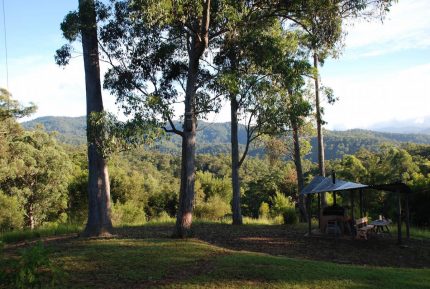
And in terms of other sustainability tips, I’m just thinking, we live on a really steep hill when we’re in Tassy and I’m thinking I might need a cargo-bike that’s electric or something because I always end up carrying a large amount of stuff around in the nature of my work and I’m doing a lot on foot and pushing my bike, travelling without fossil fuels wherever possible.
It seems like you’re already doing so much in living off-the grid that it seems like it’s not even something you need to think about anymore, it’s just how you live.
Yeah although, sometimes it’s really good to have a visitor. You think “Yeah I’m pretty much there, I’ve made as many changes as I can in my life” but sometimes it’s good to have an outside eye to just point out something and say “maybe you could do that differently”
So it would be great if people could talk about their life-style habits openly with eachother without feeling defensive or like their way of life is being attacked or something.
So you’d just be able to go “Hey you know you can recycle that” or make suggestions.

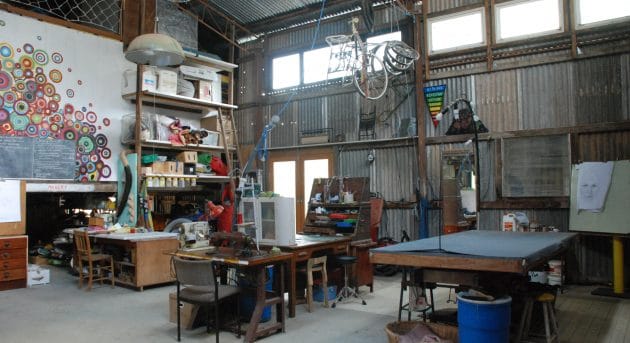

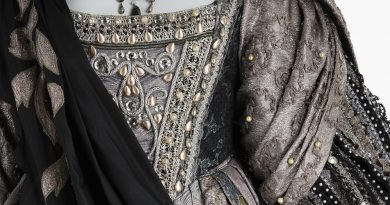
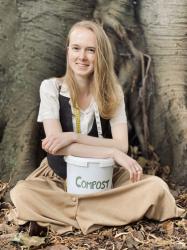
Please, is there email to contact Bryony Anderson?
Hope to find you well
Hi!
I can email it to you 🙂 your email came up on my notification from this message.